The subtleties of wall clapboard decoration

Modern technologies in construction and repair are constantly being improved, a lot of new materials appear. GKL, OSB, plastic are in demand and are widely used, but wood still does not give up its own positions. In particular, the clapboard is very popular and in demand; it is practiced when cladding ceilings, walls, window and door slopes. The material can be used for interior and exterior work.


Features and purpose
Lining is a natural and environmentally friendly material. Its positive features include the following characteristics.
- Nice appearance. The never-repeating original wood pattern makes it possible to create extremely interesting finishing materials. The variety of colors, shades and contrasts makes it possible for designers to actively use it in their own projects. With the help of this material, you can not only change the look of the interior of living quarters, but also make the facade of any house more attractive.
- Wear resistance. The lining boards are thoroughly impregnated with all kinds of protective equipment, the treated surface will serve for more than a dozen years. The boards are tightly docked with each other during installation, as a result of which an extremely strong surface is formed, excellently protecting the internal or external walls from the influence of negative factors.





- Ease of installation. Laying can be done even by those who know absolutely nothing about construction. The ease of installation greatly attracts consumers, since spending a minimum of time on mastering the most important rules for finishing, you can save significant money on the remuneration of specialists.
- Good soundproofing. When installing the lining between it and the wall of the house, an insignificant air layer is formed, which counteracts the penetration of third-party sounds and ensures silence in the house.
- Affordable price. The cost of the material fluctuates in a relatively wide range, which makes it possible to choose the most economically profitable option. It should also be noted that installation does not require careful preparation of the base, which helps to reduce the cost of finishing work.

The lining is an almost universal product.used for cladding a wide variety of surface types, from room walls to ceilings. It can be used for finishing a bathroom in an apartment, a bathhouse, a sauna, office premises, cladding a log house, lumber, frame, brick houses or aerated concrete buildings. You can hem the roof with clapboard, since the tongue-and-groove connection used makes it possible to give the cladding the appearance of a monolithic coating.



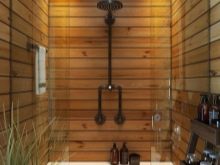


Types and characteristics
The lining can be made of wood, MDF (wood waste), as well as PVC (plastic lining).
From wood
Wooden lining is the ancestor of all lining, which has not lost its popularity in our time. Lining made of wood is widely used both in the external and internal cladding of structures. It looks especially respectable in hallways or saunas. Of course, in order for the service life of the lining to be long, even in places with high humidity, the basis for its manufacture should be appropriate tree species, such as linden or alder.Other types of wood (pine, spruce) are suitable for use in more acceptable temperature conditions.


This material can also be of different shapes. There are several types of profiles.
- Standard Profile - front side with equal bevels both on the side of the groove and on the side of the tenon. In this case, the outer corners and edges of the profile are straight and look somewhat rough.

- Profile named "soft-line" gives the lined surface a smoother appearance, which is facilitated by rounded bevels. Lining of the “calm” brand looks the same smooth. But unlike the "soft-line", it has a shallower groove and a shorter spike, which significantly reduces the performance of the material, since the profile locks can part with fluctuations in temperature and humidity.

- If grooves are additionally made in the standard profile on its rear side, then the so-called euro lining... Such grooves are made to prevent the accumulation of condensate behind the mounted profile, since air masses circulate between the base and the profile.

- Lining "American". By virtuously copying solid wood, it is the most successful replacement for solid wood. Its relevance is facilitated by an acceptable cost, which is significantly lower than the cost of the array. It also owes its popularity to its peculiar design, which has managed to captivate the hearts of designers, and resistance to the effects of high humidity and precipitation, which makes it possible to use it for exterior decoration.

Made of MDF
This material can be attributed to wood, but relatively. The raw material for its production is finely chopped wood waste or wood dust. Thanks to the specialized heat treatment of raw materials, a fairly strong and relatively light material comes out, the environmental characteristics of which make it possible to use it even in children's and bedrooms.
The undoubted advantages of the MDF profile include an almost limitless color range. Due to the ability to externally reproduce not only the patterns of wood, but also the pattern of stone, marble and other materials, the profile has gained particular popularity among people with modest material wealth.
Walls lined with MDF look cozy and stylish.


Plastic
A profile made of plastic or PVC panels is a strong competitor to the first two types of lining. Often, the plastic version is chosen because of its relatively low cost, low weight and the same ease of installation and reliability in operation.
It is successfully used in both exterior and interior decoration of the house. Although this material is environmentally friendly and can be used in almost any room, you must be aware that such material will not add a certain comfort to the interior of the room. The walls (or some of them), lined with plastic clapboard on the balcony or in the bathroom, look good. Nevertheless, in a living room or bedroom, such a design can look somewhat awkward. Where PVC panels look especially attractive, it is on the ceiling, and then only in common areas, such as a kitchen, bathroom, corridor.

When deciding whether to mount PVC panels on the ceiling and walls, make sure that there is no open flame or just something hot nearby, since such material freely deforms from high temperatures, loses its color and after that cannot be restored, or repair.

Dimensions (edit)
It should be noted right away that the sizes of ordinary and euro lining are different. The length, thickness and width of a regular profile is set by the manufacturer.
The greatest demand is for lining made of wood, which is characterized by typical sizes.
- The smallest board length is 0.2 meters, the greatest length is 6 meters.Such dimensions make it attractive for those who intend to cover a bath, balcony or living room.
- The profile width can be from 76 to 200 millimeters. This size makes it possible to perform high-quality cladding both inside and outside the house.
- The thickness of the board is from 12 to 40 mm, the size of the spike is from 4 to 5 mm.


If wooden profiles are analyzed in length, then they are divided into two classes: long ones are used for cladding, short ones for sheathing of roof eaves. Short planks are cheaper due to the fact that the blanks are produced from the leftovers from the production of long planks.

The dimensions of the lining can range from 1.5 meters to 6 meters in length. The thickness can be 13.16 and 19 millimeters. The width of the lining is 80, 100, 110 and 120 millimeters. This width is ideal for covering large spaces. The size of the spike is from 8 millimeters to 9 millimeters.
For euro lining, the following size discrepancies are allowed:
- along the length +/– 5 mm;
- thickness 0.7 mm;
- in width - one millimeter;
- the size of the spike can be +/– 0.5 mm.
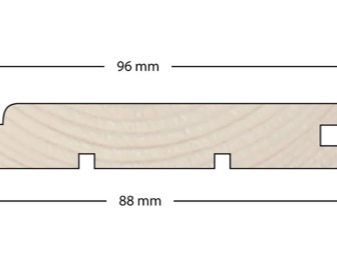

Subtleties of installation
Usually, for cladding clapboard on the bases, wood frames are created with a distance between the bearing profiles from 40 to 60 cm.Likewise, the subsystem can be made of galvanized metal profiles, only in order to attach clamps instead of nails (for rooms with high humidity, anodized or copper ones are used), it is necessary to use self-tapping screws for metal or rivets with a small head, type LN 9 mm.
The slats can be directed both vertically and horizontally. In the horizontal direction, the expansion ducts on the rear side are excellent at removing moisture (very good for steam rooms), and in the horizontal direction of the duct downward, moisture penetration into the lock is prevented (excellent for facade cladding).

I must say that lining made of wood, mounted horizontally, can be practiced for sheathing wooden and metal partitions. Sometimes the walls of frame buildings are sheathed with it directly on the racks. A good decorative effect can be obtained if the boards are installed diagonally, although there are difficulties with cutting and planning the economical use of the material.


It is better to install forcing boards to the enclosing structures with a compensating gap (up to 10 mm). After mounting, the outer and inner corners of the abutment are closed with wood extensions. Similarly, for these purposes, you can use a rope made of jute, hemp or flax, which is excellently combined with wood and reliably seals technological gaps, since it repeats all kinds of curved surfaces very accurately.


Facade
In order to finish the facade in a horizontal direction, it is recommended to carry out work from the bottom up. The first plank is mounted with the spike down and attached to the crate. The second panel is installed so that its spike goes into the groove of the first, after which it should also be fixed to the crate. All subsequent panels are mounted in the same way.
Fixing the lining to the lathing can be done by means of self-tapping screws, nails, staples construction stapler, as well as specialized fasteners. It would not hurt for the fasteners to pass through the groove strip when mounting the board, then it will be invisible. When installing each panel, it is necessary to strictly control the accuracy of its location - it should be parallel to other boards. Skews and misalignments are not permitted. It is also important that the boards are located strictly in the same plane, that is, they should not be higher or lower relative to each other.

For door and window openings, wall joints, specialized skirting boards, profile angles and strips are used. The second option is the installation of lining strips perpendicular to the base of the facade. The boards are installed and fixed in an upright position.For wall joints, two strips are used, which are set at the desired angle. The openings of doors and windows are made in a similar way (ode the plank covers the slope, the second one bases the platband).


In some cases, it is required to use a double frame for eurolining. For him, the bars are nailed in two layers, the upper one is made perpendicular to the lower one. Strengthening of the frame is required on large facades, where the own weight of the cladding is large, and the load on the supporting structure is increased.
It is better to varnish and paint the lining after installation is completed, and treatment with protective agents both inside and outside should be carried out before installation.
When cladding the facade, the lining can be used in conjunction with other materials. This will give the exterior of the house a more expressive look. You can also use lining of various colors.


Interior decoration
The lining, of course, can be nailed directly to the ceiling or wall, but only on condition that they are even and made of wood, which happens extremely rarely. As a rule, a frame is first built on the surface (the slats are fixed), and then the facing material is nailed. There is a small but very significant nuance here. If the lining will be mounted in a vertical position, then the slats must be filled horizontally on the wall in increments of approximately 0.5-1 meter. If the horizontal position is selected for the cladding, then the slats are positioned vertically.

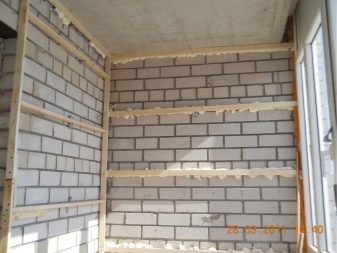
This is done for a more reliable adhesion of the frame to the lining. Naturally, the wall must be flat, so all the slats in the frame must be at the same level. To do this, it is necessary to use a plumb line and a level when working. Upon completion of the preparatory work, you can proceed to the sheathing. Experts recommend starting at the corner and moving on to the rail after the rail.
In rooms that do not require impeccable beauty (in particular, outbuildings and utility rooms), nails can also be used for fixing. Of course, not ordinary nails, but special ones - with small caps.


You can just nail the planks in the center, but to form a decent appearance, it is better to hammer in the carnations in the grooves, then they will practically not be noticeable. But if you want the surface to have a pleasant aesthetic appearance, it is better to use special fixation brackets.


Recommendations
Mounting the lining is required to be done by adhering to the rules. At this stage, there should be no omissions or defects, otherwise the cladding may turn out to be fragile and will not last long.
Between planks and base (wall, facade, ceiling, etc.) there must be a ventilation gap of 1-2 centimeters. Often, during installation, it is overlooked, closing the space for ventilation with thermal insulation. For proper ventilation, an empty space must be left between the installed clapboard and the ventilation layer. If this is not done, then the material will begin to wet, crack, bend.
If during the production of work no space was left for ventilation, the casing must be dismantled. In the presence of insulation, there are 2 ways to create a ventilation gap: you can remove part of the insulation or "build up" the frame, thereby increasing the distance between the base and the skin.


In the process of assembling with your own hands, when aligning the strips of the euro lining, you must act extremely carefully. In order not to spoil the material when tapping their ends, it is necessary to correctly calculate the impact force. Actually, due to the fear of chopping off the groove, they often leave small distortions of the strips during installation. This should not be allowed - the material must fit perfectly evenly, exactly parallel to the starting bar. Otherwise, the skew will only increase, due to which the entire cladding will be curved.
If the boards are already mounted skewed, you need to find the one with which the discrepancy has gone.All cladding installed after it must be dismantled. Then the uneven plank is leveled and the lining is mounted first.


When heated, the tree expands and shrinks when it cools. To compensate for the transformation of its dimensions when laying the cladding along its contour, a space of several millimeters is retained. If the laying is done without a gap and the boards rest against the walls, the sheathing undergoes deformation over time. To correct such a mistake, you need to dismantle the skirting boards and cut the planks a little from the edges. So, when facing walls, the extreme strips should not reach the corners by 5-6 mm. The same is with the joints with the ceiling and floors.
Often, the lining is fixed to the frame by means of clamps (special configuration brackets). Meanwhile, ordinary staples can be used only when it is necessary to sheathe indoor and dry rooms. For external cladding, as well as for cladding rooms with high humidity, it is better to use nails or self-tapping screws. Standard brackets in such episodes provide not very reliable fastening and the casing deforms as the wood becomes damp, as well as under the influence of sharp temperature fluctuations.

If the cladding of a room with high humidity or the facade is implemented using not very strong brackets, it is necessary to strengthen the fasteners. The easiest option is through fixing with nails or self-tapping screws. It must be taken into account that in this situation, their caps will be noticeable on the surface of the sheathing. If this is unacceptable, then the lining should be removed and laid down again using more reliable fasteners.
In accordance with the regulations, the lining after installation must be covered with protective equipment. In fact, this is not always produced, as a rule, the material performs its functions without a special coating. The result of this is the appearance of fungal neoplasms on the surface. If the tree has not had time to deteriorate, it is necessary to apply a protective substance to it as soon as possible. If the fungus has already formed, the surface of the boards must be treated with a special agent from the fungus, and then applied protection. In some cases, before applying the protection, the surface is sanded to remove damaged wood.

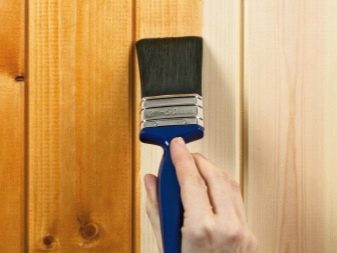
Cladding examples
- There is an opinion that the lining is more suitable for a bath or a summer residence than for an apartment and a cottage. This misconception is successfully refuted by designers who harmoniously fit wood cladding into a wide variety of trends and styles.
- The lining of wood in the interior is harmoniously combined with wallpaper, tiles, plaster. With a professional combination of textures, you can create a stylish and elegant interior.
- The lining can become an integral part of the interior in the Scandinavian style. In this design, it is in harmony with artificial or natural stone and large beams on the ceiling.


- For those who are in love with Provence, the execution of the walls with material made of wood of natural tones will certainly suit. In this version, the combination of wood with plaster and rough plank floors looks nice and at ease.
- Another style that requires the use of natural wood cladding is Russian. The walls faced with a block house look like the walls of a log house.


- You can also use lining in high-tech style. In this version, materials painted in neutral white or gray colors are used as a background for rich accessories.
- Fans of minimalism will most likely like the combination of lining with a strict cladding of ceramics and stone.
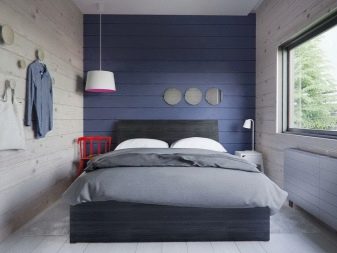

See below for more details.













The comment was sent successfully.